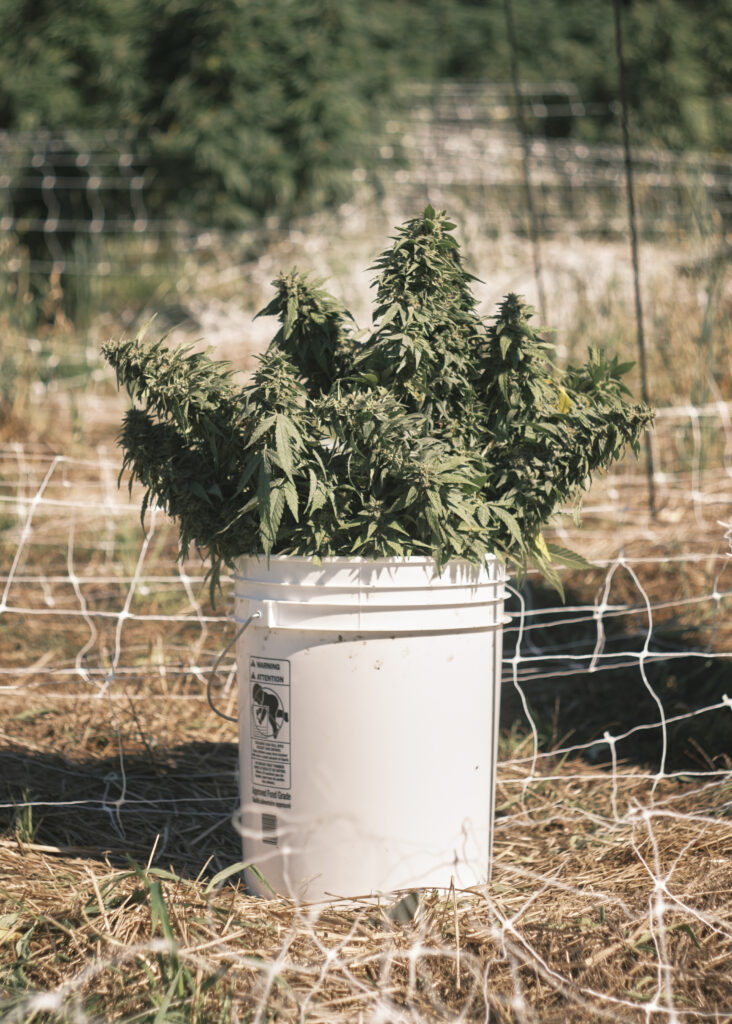
Photo essay: Cannabis harvest season in the Maritimes
ANNAPOLIS VALLEY, NS, CANADA – Adam Webster walks through his growing field cutting scissors in hand. He points to a few crooked stemmed plants held upright by trellises and sticks, damaged by the hurricanes and tropical storms that sweep the Maritimes every September.
“The rain was enough to topple a lot of plants, but we just bring them back up,” says the owner of Annapolis Valley Craft Cannabis, a small micro-producer outside of Wolfville. “But they didn’t snap.”
Like other historically fertile regions in Canada – Okanagan, Niagara or Canada’s “cannabis belt” in southwestern Ontario – the Annapolis Valley is warming to cannabis cultivation.


Lee McMahon had lived and worked in the Kootenays for seven years learning the tricks of the growing trade before returning to his family’s farm outside Kingsport, NS. There he started Tidal Leaf Farms, a greenhouse micro-producer that received his license in June 2020.
The prospect of sustainable growth in his home was appealing to him.
“Many have [told me] Don’t go outside, just try indoors, ”he says. “But we should move as a nation towards sustainable products. Growing grass indoors is not sustainable. ”

However, that was not without its challenges.
“The temperature, the weather, the hurricanes – that makes it really difficult [grow] outside, ”he says. Unlike Webster, McMahon grows in a covered greenhouse that can be rolled up to let the wind in.
Often one learns through experience. McMahon recently had his crop of White Widow, large plants that looked “really sad” after Hurricane Ida in early September.
“The biggest thing will be to find the right strain for here.”
For a region as windy and wet as the Valley, that means hearty planting: short, bushy indicas that can withstand the high winds of the Bay of Fundy in the fall, and fast-flowering sativas that finish their flowering period before temperatures plummet.

“The Annapolis Valley is probably one of the best growing regions in Canada, I would say. Were in [soil] Zone 6, which is comparable to southern Ontario or BC, ”says Webster. “This was once a large tobacco growing area; Cannabis is pretty similar. ”
Wind and rain aside, Webster says that being a cannabis heartland, the region has a lot to offer.
“We have good heat here, especially on this one [south-facing] Farm, ”he says. “We also have sandy soil that is well-drained” and that offers some compensation against the wet weather. “[Plants] how much water, but not near the roots. ”

Good sun and earth are not all microscopes need to gain a foothold in the cannabis industry. Micro-producers like Webster have a hard time getting their cannabis to market.
The high cost of selling microcultivator licenses means that growers like McMahon and Webster often have to go through larger buyers first.
Varieties and harvest size seem to be the biggest hurdles outside of licensing costs. He explains that vendors like Nova Scotia Liquor Corporation (NSLC) are interested in local produce as long as it is a single variety, consistent, and large-scale.
It can be difficult for mics to hit this scale for a single strain without a partner.
Most of Webster’s craft flowers are made into oil and sold wholesale. “We have to sell through these bigger producers who are already in trouble, it’s like it was designed for us not to be successful.”

But Webster gets hope when he looks at other artisan growers teaming up to achieve the required size. He looks to the Kootenays, where Rosebud Cannabis Farms has found a possible solution.
The producer brought together seven micro-breeders to grow a single variety, which Rosebud then brings to provincial markets. One day, Webster wants to see this type of initiative on the east coast.
For now, McMahon and Webster can only finish this year’s harvest and start planning for next year. They hope some of the business questions will be answered by the planting season.
Last but not least, Webster will hold on to his belief in the product. “Outdoor tomatoes always taste better than a greenhouse,” says Webster. It’s the same with him with cannabis.
“That,” he says, while carefully cutting the fan leaves from the bud, “has all the flavor of the earth and everything that grows in it. Hydroponics, it’s just surreal – I don’t think you can ever emulate that. ”

Kieran Delamont
Kieran is a writer and photographer from Nova Scotia in Mi’kma’ki, the ancestral and unassigned territory of the Mi’kmaq. His work has appeared in Broadview, The Walrus, Maisonneuve and elsewhere, and he has been writing about the cannabis industry since 2016.
View article by Kieran Delamont
By submitting this form, you subscribe to Leafly news and promotional emails and agree to Leafly’s Terms of Use and Privacy Policy. You can unsubscribe from Leafly email messages at any time.





Post a comment: